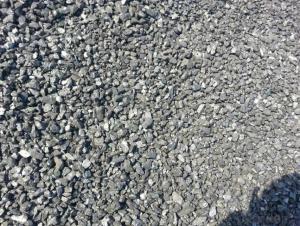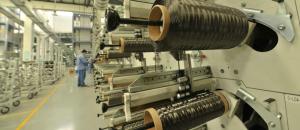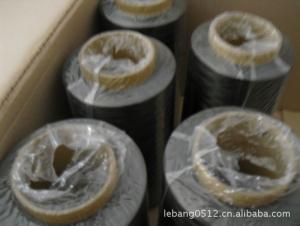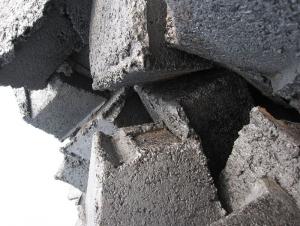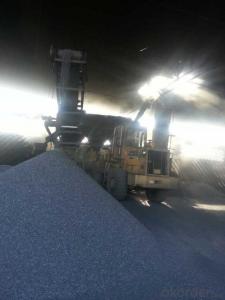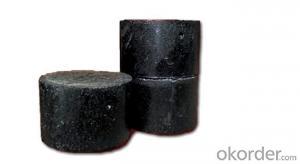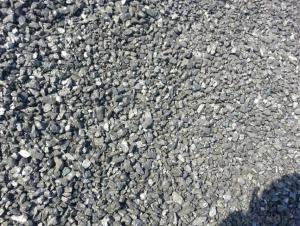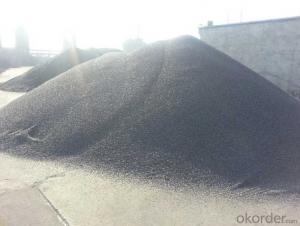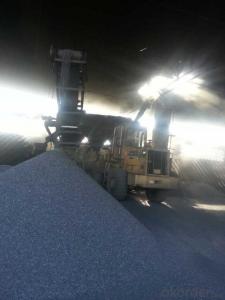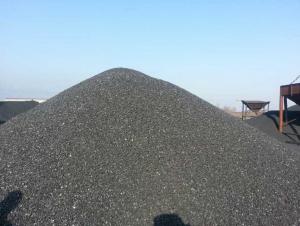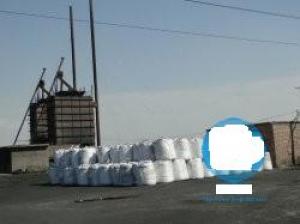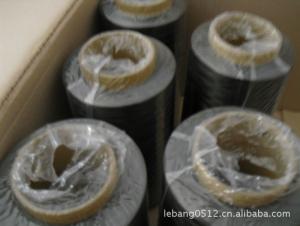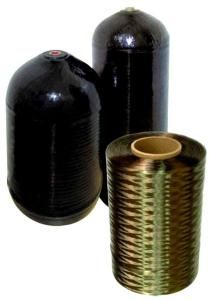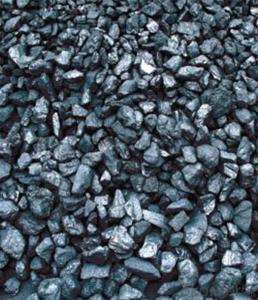FC90-95 Carbon additive -Low Sulphur and low P
- Loading Port:
- Tianjin
- Payment Terms:
- TT OR LC
- Min Order Qty:
- 20 m.t.
- Supply Capability:
- 3000 m.t./month
OKorder Service Pledge
OKorder Financial Service
You Might Also Like
Packaging & Delivery
25kgs/50kgs/1ton per bag or as buyer's request
Specifications
Calcined Anthracite
Fixed carbon: 90%-95%
S: 0.5% max
Size: 0-3. 3-5.3-15 or as request
Advantage and competitive of caclined anthracite:
1. strong supply capability
2. fast transportation
3. lower and reasonable price for your reference
4.low sulphur, low ash
5.fixed carbon:95% -90%
6..sulphur:lower than 0.3%
It used the high quality anthracite as raw materials through high temperature calcined at over 2000 by the DC electric calciner with results in eliminating the moisture and volatile matter from anthracite efficiently, improving the density and the electric conductivity and strengthening the mechanical strength and anti-oxidation. It has good characteristics with low ash, low resistvity, low sulphur, high carbon and high density. It is the best material for high quality carbon products.
General Specification of Calcined Anthracite:
| FC % | 95 | 94 | 93 | 92 | 90 |
| ASH % | 4 | 5 | 6 | 6.5 | 8.5 |
| V.M. % | 1 | 1 | 1 | 1.5 | 1.5 |
| S % | 0.3 | 0.3 | 0.3 | 0.35 | 0.35 |
| MOISTURE % | 0.5 | 0.5 | 0.5 | 0.5 | 0.5 |
Pictures
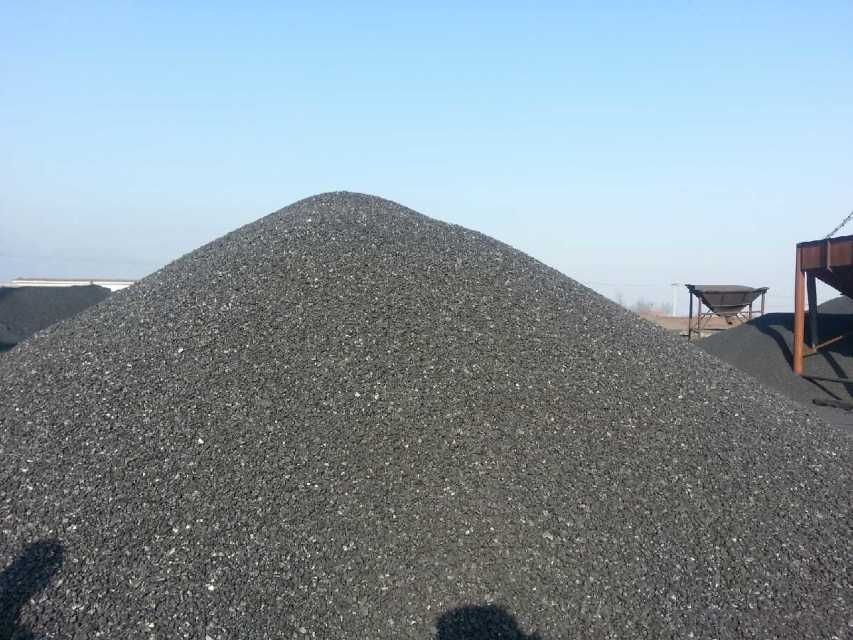
- Q: There is a graphite mine, looking for three experts engaged in mineral processing industry asked. They say earthy graphite, and the answer to the taste is quite different. Some say that the fixed carbon content of 15, and some say graphite grade 90%. The same sample. Some people say that very valuable, and some say that the grade is too low, worthless. I'm all confused. What do you mean by graphite grade and fixed carbon?
- The taste of graphite powder refers to its purity, that is, the amount of carbon; fixed carbon content refers to the removal of water, ash and volatile residues, it is an important indicator of the use of coal. The two are essentially different
- Q: What are the environmental impacts of carbon emissions?
- The environmental impacts of carbon emissions include climate change, air pollution, ocean acidification, and ecosystem disruptions. Carbon emissions contribute to the greenhouse effect, leading to global warming and climate change. This results in more frequent and intense extreme weather events such as hurricanes, droughts, and heatwaves. Additionally, carbon emissions contribute to air pollution, especially in urban areas, leading to respiratory problems and other health issues. Increased carbon dioxide in the atmosphere also leads to ocean acidification, threatening marine life and coral reefs. Finally, carbon emissions disrupt ecosystems by altering the natural balance of carbon cycles and causing habitat loss for many species.
- Q: How does carbon impact biodiversity?
- Carbon impacts biodiversity in several ways. Firstly, carbon dioxide is a greenhouse gas that contributes to climate change, leading to shifts in temperature and precipitation patterns. These changes can disrupt ecosystems and alter habitats, affecting the distribution and survival of various species. Additionally, excess carbon in the atmosphere can lead to ocean acidification, which negatively affects marine biodiversity by harming coral reefs and other organisms reliant on calcium carbonate structures. Finally, deforestation and land-use changes associated with carbon emissions result in habitat loss, further reducing biodiversity. Overall, carbon emissions have significant and detrimental impacts on the delicate balance of ecosystems and the diversity of life on Earth.
- Q: How does carbon contribute to the color of gemstones?
- Carbon contributes to the color of gemstones through its ability to absorb certain wavelengths of light. When carbon is present in gemstones, it can create various color centers that give the gemstone its distinct hue, such as yellow in diamonds or blue in sapphires.
- Q: What is carbon fixation?
- Carbon fixation is the process by which carbon dioxide from the atmosphere is converted into organic compounds, primarily through photosynthesis in plants.
- Q: Now the furnace rock carbon early deleted, more than +10, he wants advanced I can't do ah
- High-grade furnace rock carbon is in the previous time, Tencent limited, only the mall can buy! Now, the mall is off the shelf! It's already gone! Thank you!
- Q: What is carbon nanotube?
- Carbon nanotubes, which are made up of carbon atoms arranged in a hexagonal lattice pattern, are cylindrical structures. Their size is incredibly small, measuring in the nanometer scale, and their length can vary from a few nanometers to several centimeters. The remarkable properties of carbon nanotubes make them highly desirable for a wide range of applications. They possess exceptional strength, surpassing that of any other known material, which makes them perfect for use in structural composites. Additionally, they exhibit excellent electrical conductivity, thermal conductivity, and chemical stability, making them valuable in fields like electronics, energy storage, and catalysis. There are two primary types of carbon nanotubes: single-walled nanotubes (SWNTs) and multi-walled nanotubes (MWNTs). Single-walled nanotubes consist of a single layer of carbon atoms rolled into a tube, while multi-walled nanotubes consist of multiple concentric layers of carbon atoms. The arrangement of carbon atoms and the tube's diameter determine the nanotube's properties. Due to their unique properties, carbon nanotubes have the potential to revolutionize various industries. Researchers are exploring their use in electronics as high-performance transistors, interconnects, and sensors. They also hold promise in energy storage, enabling batteries and supercapacitors with higher energy densities and faster charging rates. Furthermore, their large surface area and distinctive chemical properties make them suitable for catalytic applications, such as water purification and chemical synthesis. Despite the immense potential, challenges remain in the large-scale production and commercialization of carbon nanotubes. However, ongoing research and development efforts continue to expand their applications, making carbon nanotubes an exciting field of study with significant future possibilities.
- Q: The difference between graphite and carbon
- There are three kinds of carbon allotropes, namely diamond, graphite and amorphous carbon.Graphite is a crystalline mineral of carbonaceous elements, and its crystalline framework is hexagonal layered structure
- Q: The difference between double offset paper and carbon free printing paper
- The use of the two is entirely different.Double offset paper is a printing paper. It is a higher quality printing paper. The contrast, flexibility and surface strength have higher requirements, and the acidity and basicity of the paper should be close to neutral or weak alkaline.Double gummed paper refers to printing paper, also called offset paper. Culture, printing paper paper one of the typical representative, in the business of two-sided offset paper (two-sided offset paper) commodity name, the old road / Taiwan area with a ream of paper, also called die rough paper.Carbon free copy is just typing paper and coating. Paint is divided into two kinds, one kind of colored, one kind of colorless.
- Q: What is the boiling point of carbon?
- The boiling point of carbon, a nonmetallic element, depends on its allotrope. Carbon has multiple allotropes, including graphite and diamond, each with different physical properties. Graphite, which consists of layers of carbon atoms arranged in a hexagonal lattice, does not have a boiling point since it sublimes directly from a solid to a gas. On the other hand, diamond, which is composed of carbon atoms arranged in a three-dimensional lattice, also does not have a boiling point as it undergoes direct sublimation. Therefore, carbon does not have a boiling point in its pure elemental form.
Send your message to us
FC90-95 Carbon additive -Low Sulphur and low P
- Loading Port:
- Tianjin
- Payment Terms:
- TT OR LC
- Min Order Qty:
- 20 m.t.
- Supply Capability:
- 3000 m.t./month
OKorder Service Pledge
OKorder Financial Service
Similar products
Hot products
Hot Searches
Related keywords
